Zenith El Primero A384 Revival – The Final Piece in the El Primero 50-Years Revival Series (Live Pics)
Another great vintage-revival watch to celebrate the 50th Anniversary of Zenith's iconic chronograph movement.
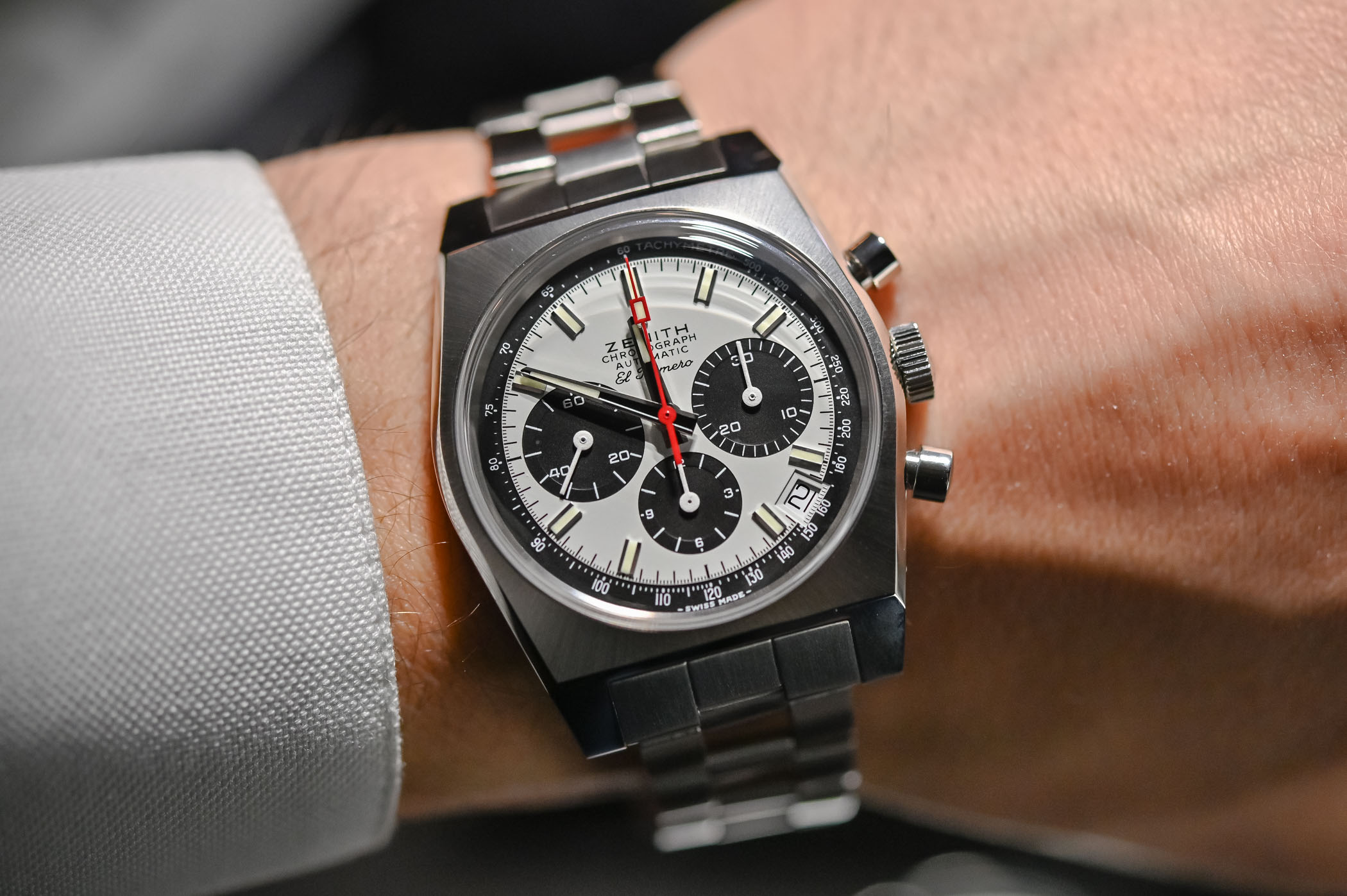
This year, as you’ve probably noticed, is the 50th anniversary of two important milestones for the watchmaking industry: the Moon Landing and the launch of the first automatic chronographs. 1969 marked the introduction of the Zenith El Primero, part of the first automatic chronographs launched on the market. To celebrate the half-century of this iconic movement, Zenith has already released several great pieces, all based on the reference A386 – in steel as part of a special revival box, or in gold with 3 limited edition watches. Today, another of the inaugural 1969 El Primero watches will be reissued, the reference A384 – and its availability is bound to please aficionados.
The Zenith El Primero, a movement first and foremost
Fifty years ago, in 1969, three brands/joint ventures revolutionised the watchmaking industry by launching – almost simultaneously – the first automatic chronograph movements. During the mid-1960s the time was ripe for the chronograph to modernise itself with the practicality and comfort of automatic winding. Watchmakers embarked on a genuine race to develop the first self-winding chronograph.
Among them was Seiko with the calibre 6139, a consortium uniting Heuer, Breitling, Hamilton-Buren and chronograph specialist Dubois-Depraz with the Chrono-Matic/Calibre 11 and finally, there was Zenith with the El Primero movement – which appears to have been the first to be unveiled to the public during a press conference in January 1969. Unlike the Chrono-Matic/Calibre 11, which was a mix of an existing 3-hand movement and a chronograph plate, Zenith’s movement was designed from scratch. The El Primero came with several interesting solutions, such as an integrated automatic mechanism, a column-wheel/horizontal clutch architecture, and an emphasis on precision with its 5Hz frequency.
The 1970s could have signalled the end of this movement… As new, accurate quartz watches gained popularity, the Swiss watch industry was plunged into a deep crisis. Zenith was sold to an American company called the Zenith Radio Corporation. Aiming to market quartz watches exclusively, the Chicago-based company decided to stop the production of all mechanical movements, including that of the El Primero calibre. When Charles Vermot, a specialist in chronograph movements, got wind that the production of mechanical movements at Zenith was about to stop, he decided to take action and hid the essential components of the high-frequency movement. Evening after evening, he secretly stored the presses (150 of them), the technical plans, the cams and the cutting tools in his secret hiding place.
Thanks to Vermot’s actions, Zenith was able to resume production of El Primero in the 1980s without having to redevelop tooling, first for Ebel – which would use El Primero for some of its models. This was instrumental in the decision taken by Rolex to replace the hand-wound Valjoux 72 powering its Daytona with an automatic chronograph movement – the Rolex calibre 4030, a modified El Primero.
Beyond its historical importance, the longevity of El Primero speaks for itself. Fifty years down the road, the movement is still commercialised and has only been slightly modified to gain in reliability and precision, although the basic architecture remains untouched. More details about the Zenith El Primero movement in our in-depth article here.
The Three inaugural 1969 watches ref. A384, A385, A386
Keep in mind, however, that when we talk about “El Primero” we are talking about the movement, not the watches. In 1969, there was not one El Primero watch. A trilogy of watches equipped with this movement was presented and launched. The most famous of the lot is certainly the reference A386, the only of these watches to feature a standard round case, and the one that is the base for the current “classic” El Primero 38mm watches. This iconic reference, with its overlapping tri-colour sub-counters, was also used as a base for the revival models (steel or gold) launched earlier this year, as part of the 50th-anniversary celebrations.
Below, the three inaugural watches of 1969 (photos: Hodinkee Shop)
The second model in this 1969 collection, the El Primero A385, features a cushion-shaped case, typical of watches from the late-1960s, early-1970s, with a gradient brown dial. Last but not least, the reference A384, which features the same 37mm cushion-shaped case, was also part of the 1969 collection, this time with a classic panda dial with several red accents.
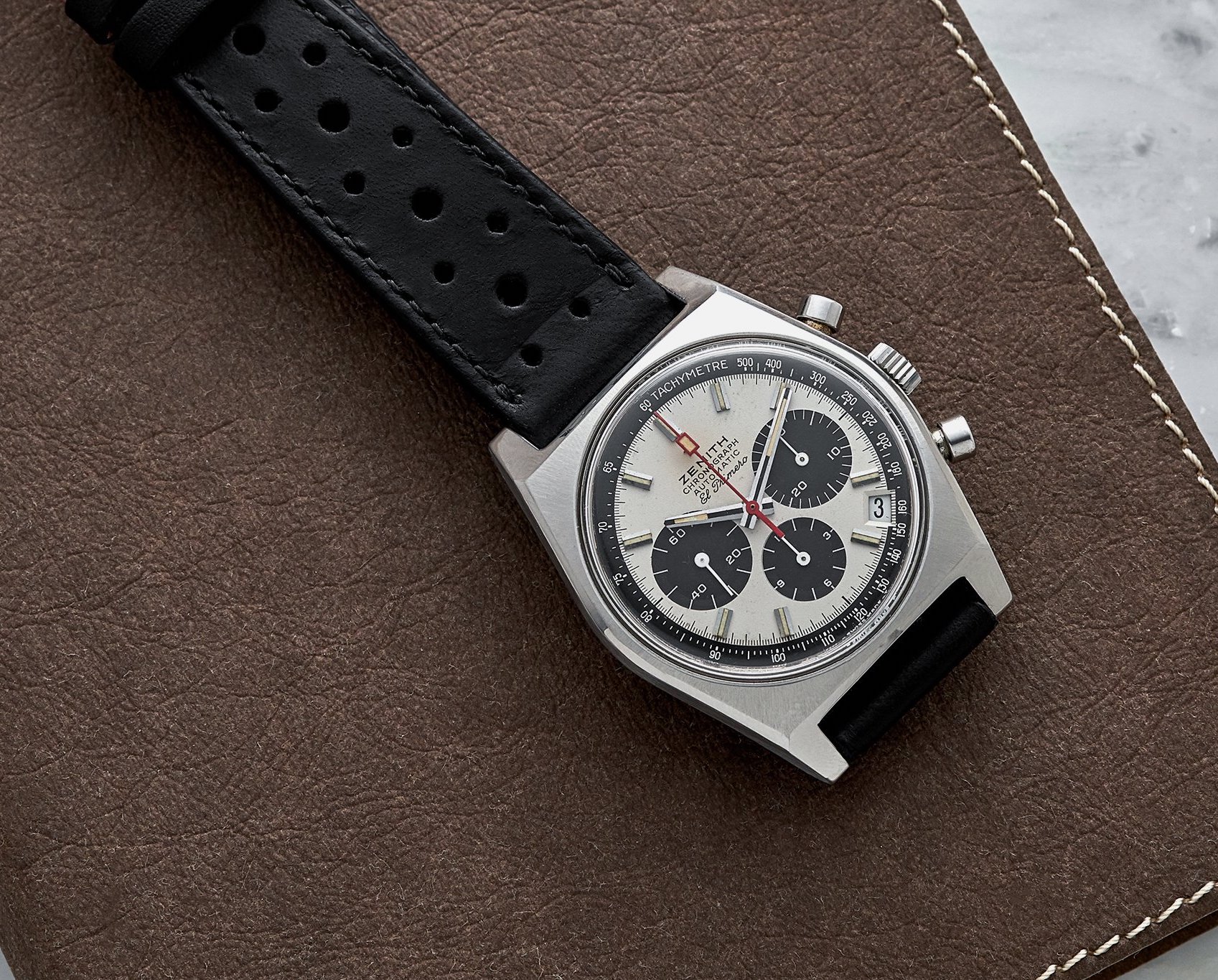
The latter is the inspiration for Zenith’s latest vintage-inspired watch, the Zenith El Primero A384 Revival.
The Zenith El Primero A384 Revival
Just like the super-faithful re-edition of the El Primero A386 – the steel one, part of the collector’s box, (the gold models are modern creations as this reference never existed in precious metal), Zenith goes for authenticity here. The idea is to reproduce just about everything from the original watch by adopting a “reverse engineering” approach, where every component is faithful to the original. Each part of the original El Primero A384 from 1969 was digitised for accurate reproduction, resulting in a truly vintage-looking piece – and not vintage-inspired.
The case retains the same 37mm diameter and 12.60mm height as the original watch, which seems pretty easy, as both the old and new watches are equipped with the same base movement. While 37mm could feel small in modern pieces, it makes a lot of sense here and contributes to the charm of this piece. Worn on my 16.5cm wrist, the watch is superbly proportioned, reminding us of the comfort of these case sizes.
The steel case is shaped and finished in a truly faithful way too, with its cushion shape, its polished facets and its radial-brushed top surface. Even though the watch reproduces that special charm of the early 1970s, it doesn’t feel fragile or outdated, as could be the case with certain vintage revivals. Zenith, however, has made minor concessions to modernity and the El Primero A384 Revival is equipped with a sapphire crystal instead of an acrylic glass and a display back replacing the solid steel caseback of the 1969 model. For the rest, everything is how it should be!
The dial of the A384 has also been faithfully reproduced, without “faux-patina”. Don’t expect dark old-radium luminous paint on the hands and indexes. This revival piece is meant to resemble what an A384 was back in 1969. The matte, white lacquered dial features the same panda look, with black sub-counters and a tachymeter scale on the periphery and red accents. Hands, indexes and inscriptions are also very close to what was found in the original A384 model. Then again, the beauty of recreating a watch by using the same base movement is that the sub-counters remain in exactly the same position.
For this edition, Zenith has also re-issued another iconic feature of its 1969 watches: the ladder bracelet. Formerly manufactured by Gay Frères, the ladder bracelet was uniquely shaped with open central links. Staging a fitting comeback, the ladder bracelet feels as smooth as the original but, on the downside, won’t be as robust as a modern steel bracelet. But we have to agree that it adds a lot of charm to this revival piece.
Powering this Zenith El Primero A384 Revival is a modern version of the El Primero calibre 400, with several updates compared to the 1969 movement – mainly, improved reliability and better chronometric precision, thanks to tighter tolerances in the manufacturing process. Still, the movement remains extremely close in its architecture; it still runs at a 5 Hz high frequency and boasts a 50-hour power reserve.
Price and availability
The new Zenith El Primero A384 Revival will be available either on a black alligator strap or, what we clearly recommend, the ladder bracelet in stainless steel (photographed here), inspired by the original bracelets of the 1969 models. The watch will be priced at CHF 7,900, taxes included.
Best of all, on the contrary to the previous (and way too rare) editions of the A386 in steel or in gold, the Zenith El Primero A384 Revival won’t be limited in production, making it much more accessible – not only in terms of price but also in terms of availability. And that is very good news. However, note that the A384 is the final piece in the El Primero 50th Anniversary Revival Series.
More details at zenith-watches.com.


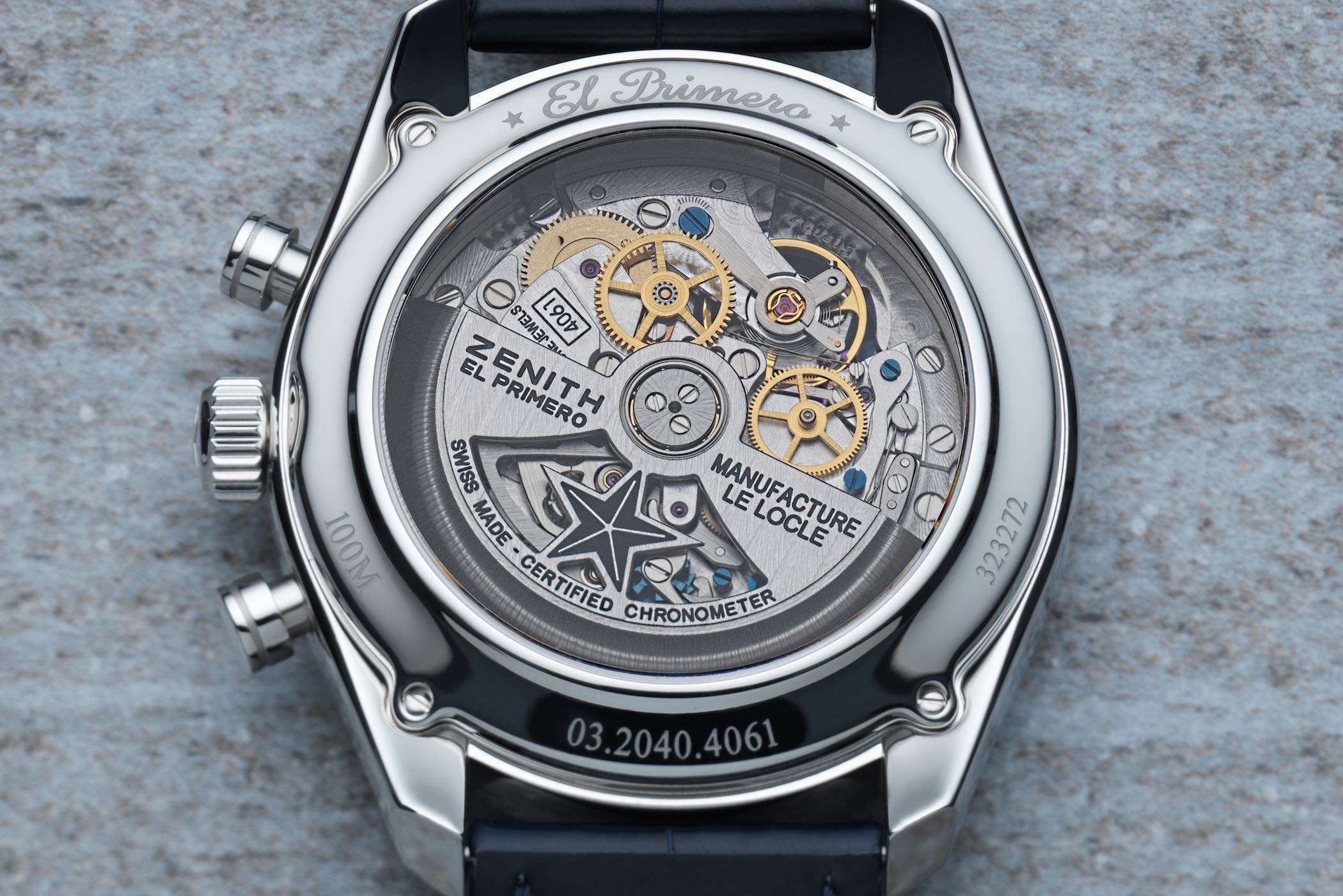
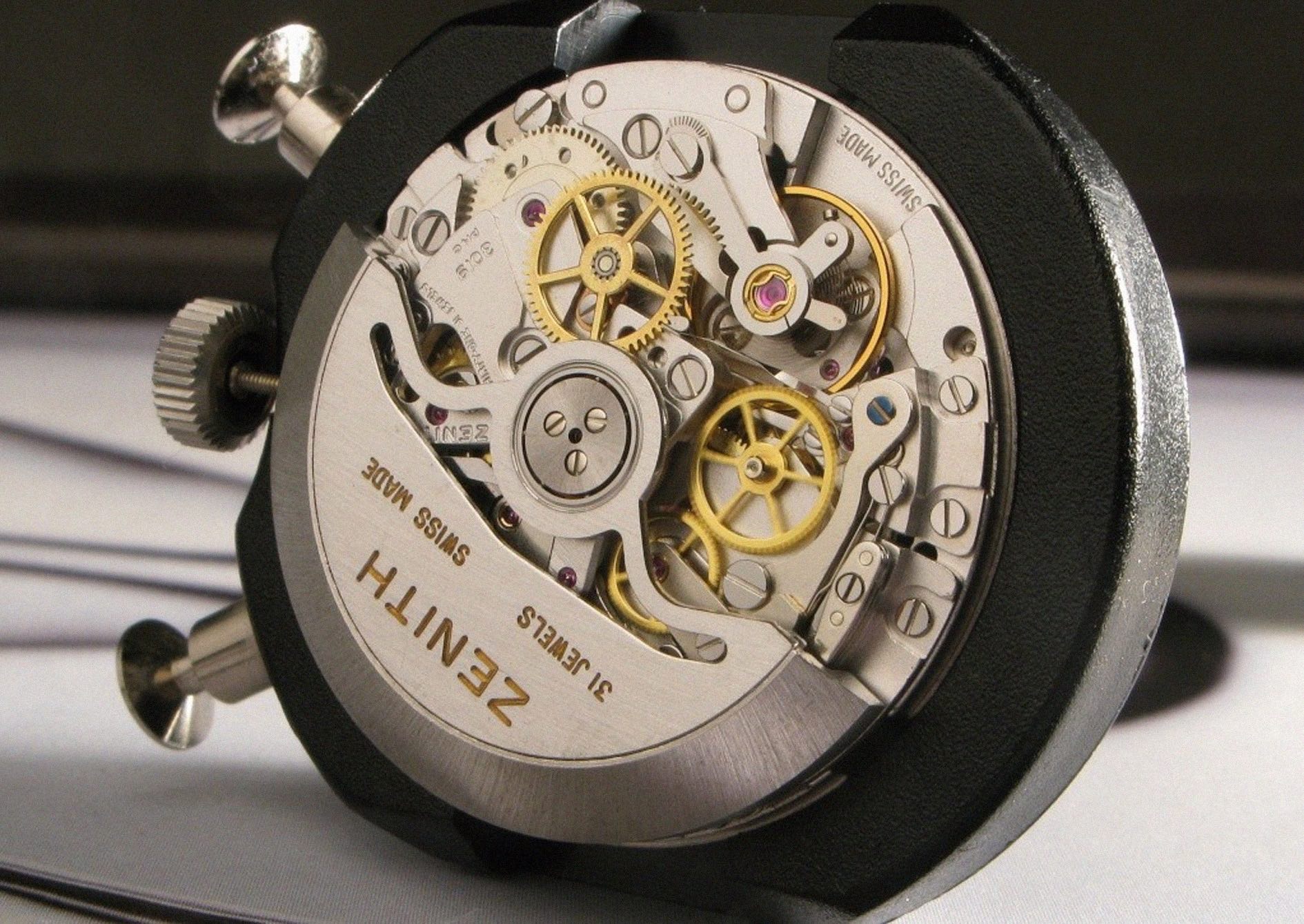



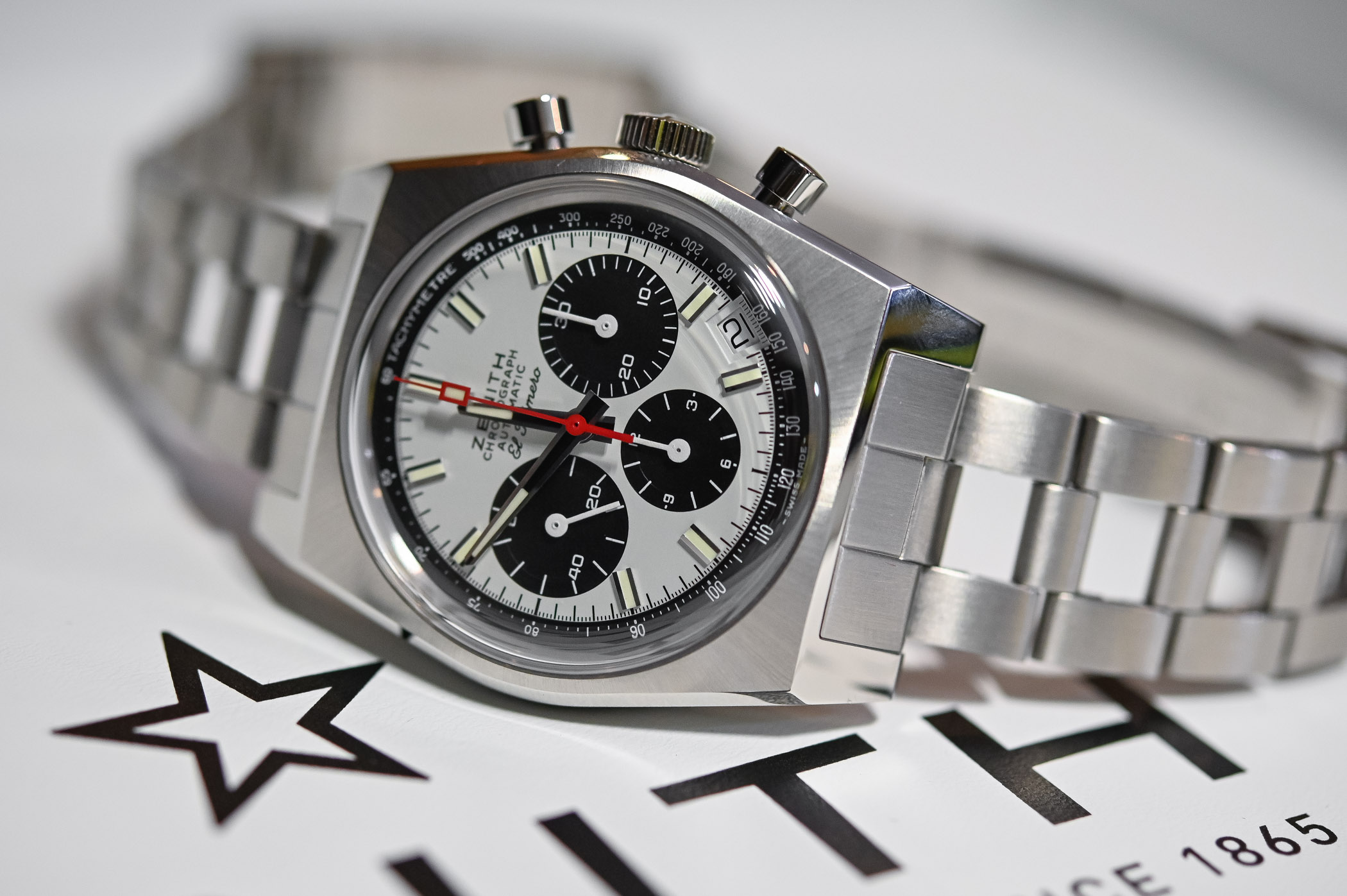
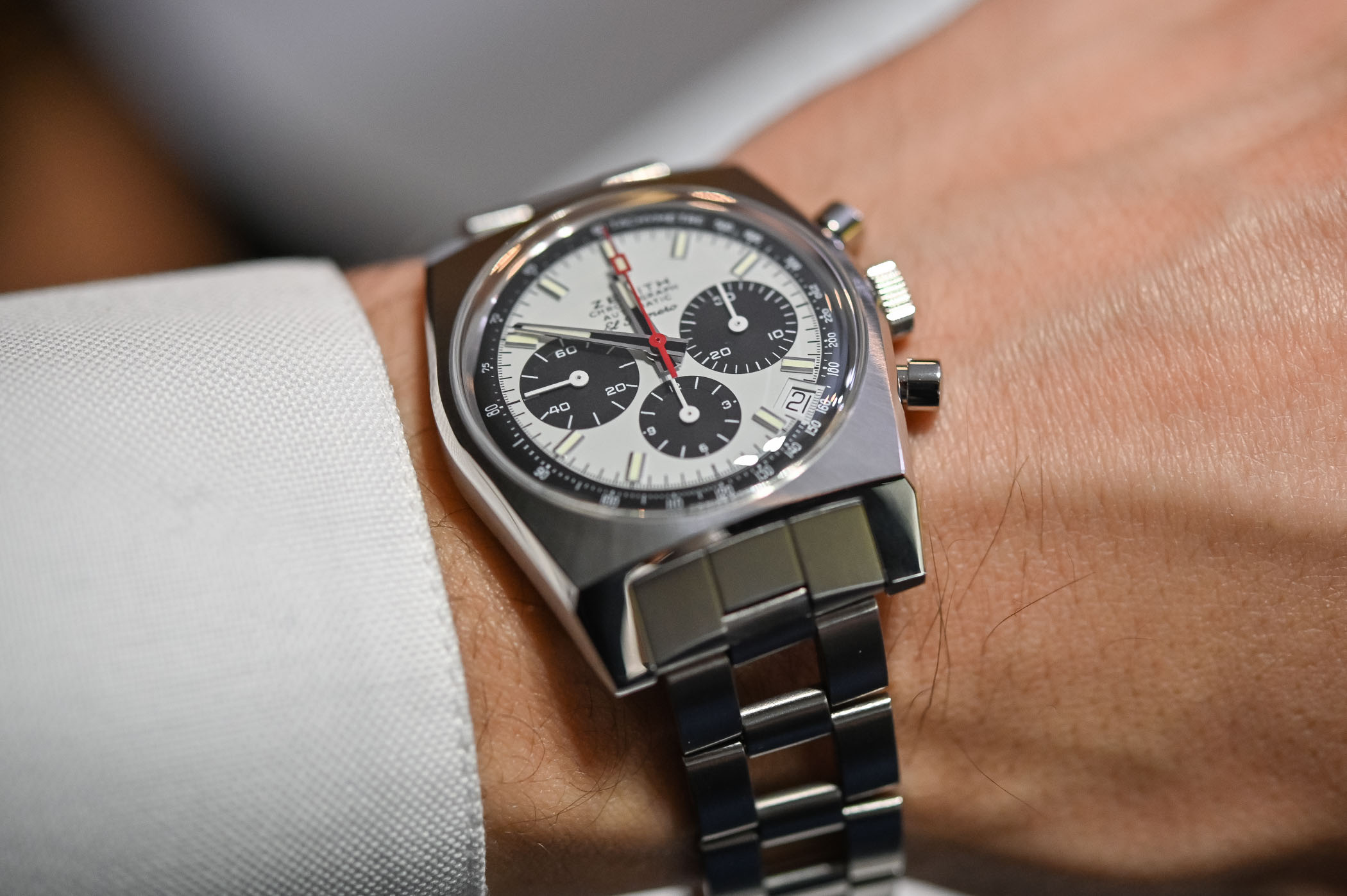
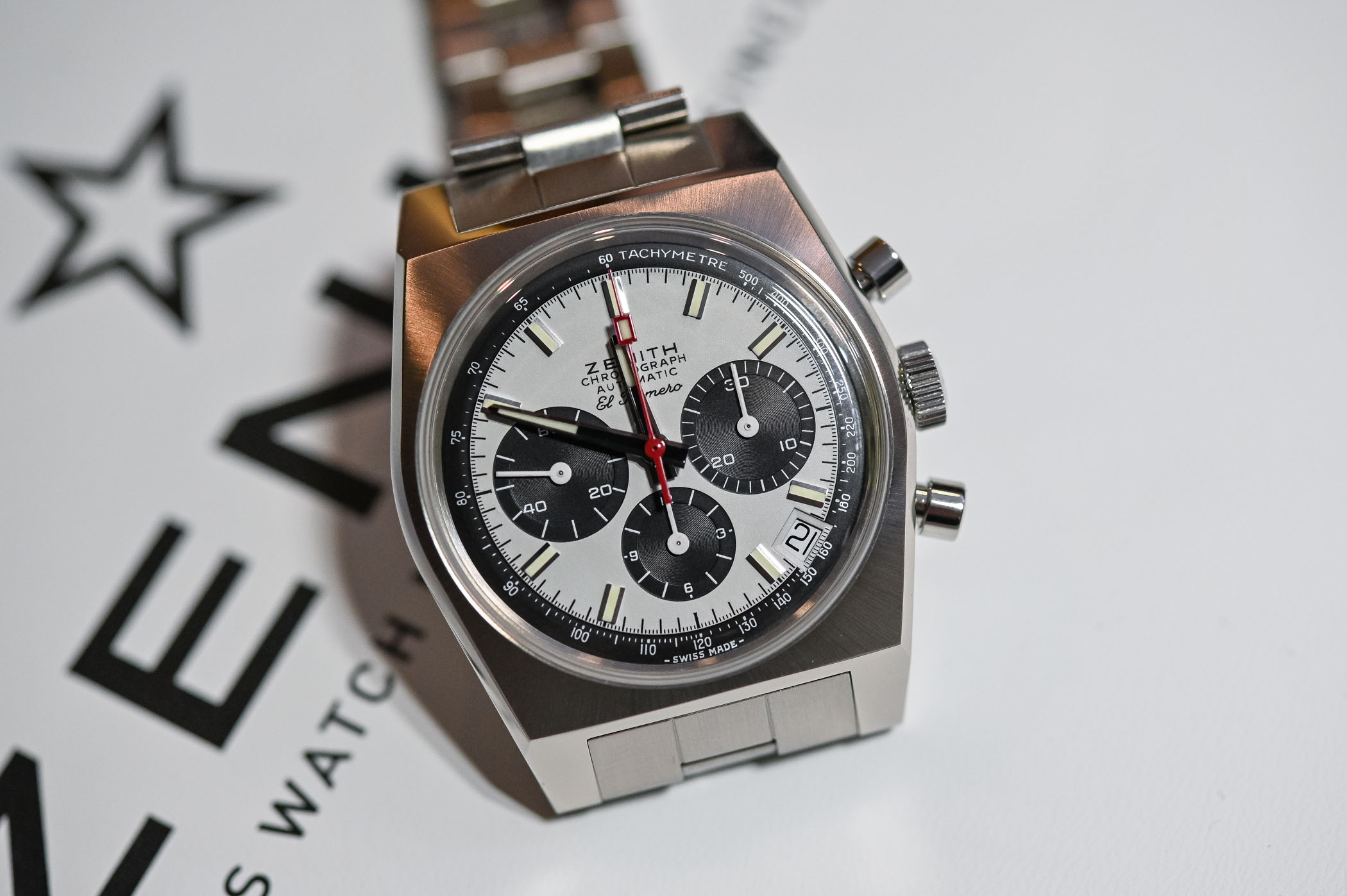

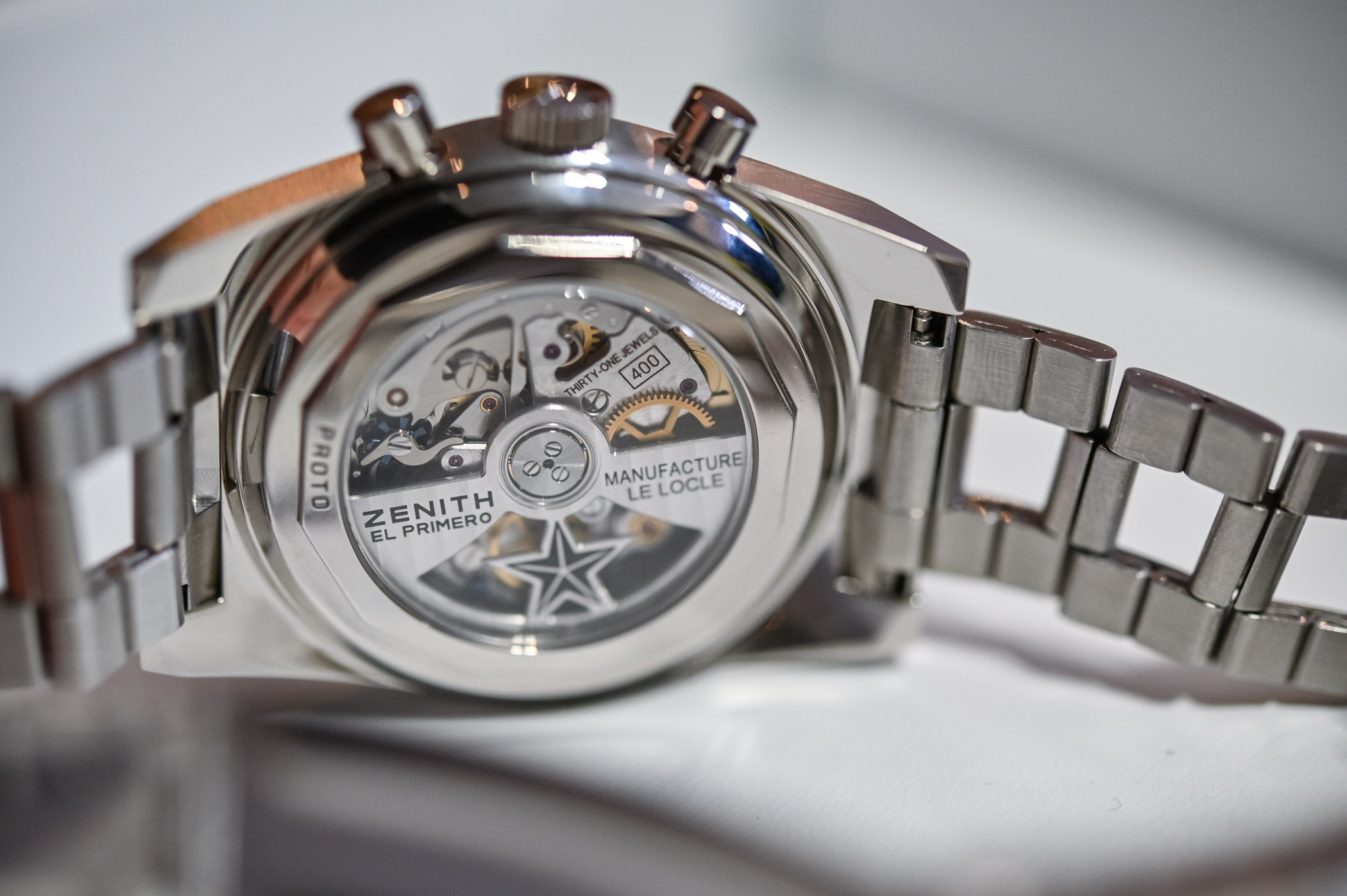




6 responses
Not bad, especially on steel bracelet. Imagine how good it would have looked if the bracelet was the same width as the lugs then tapered down towards the clasp. I suppose it wouldn’t be historically accurate that way, but so what.
Woooow!, absolutely beautiful piece. Everything I could wish for out of a Zenith is here. They hit a huge home run with this one!
Zenith have of late gone wildly off the rails in terms of aligning their collection to safe ground (ADs I have spoken with do not speak of fast-moving or aspirational product, and note woeful depreciation), and many consumers could be forgiven for not really understanding their future strategy at all – either in design or target market terms. Yet with the EP movement they still live a charmed life..
This piece really stands out with its quiet elegance, and might just see them through another five years, *if* the movement shows a durability to match its contemporaries.
But then what…?
I saw on the Zenith website misleading information on the water resistance of the a384 revival. A graphical icon and the product sheet say 100m, the plain text of the watch details says 50m. The same is true for the gold models. Now I saw a Japanese web site, with apparently the non-prototype/regular sales version of this revival model. The caseback says 50m. This is very disappointing, as I already ordered the watch believing in the report here and also on the website. Also the 38mm El Primero models all have 100m water resistance.
Also curious about the 100m water resistance and “Certified Chronometer” text (in specs and case-back photo). The A384 I purchased in 2020 says 50m and no text stating “Certified Chronometer”. What’s the truth!?
The Caseback photo isn’t that A384 watch. It was an old El Primero to illustrate the movement, not the watch. Also, the WR is indeed 50m. We were told 100m when we shot the watch (you can see it was still a prototype)